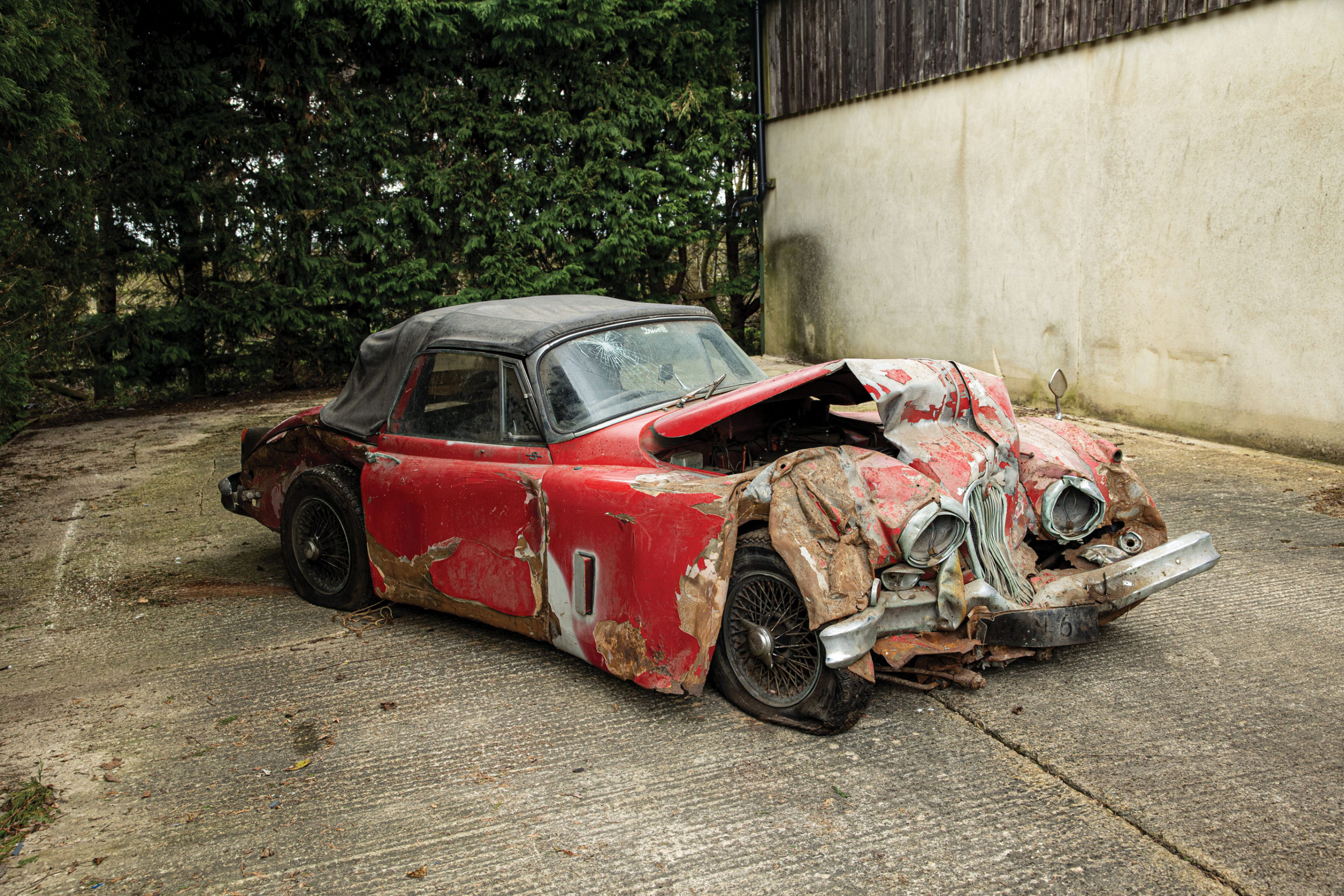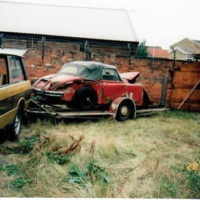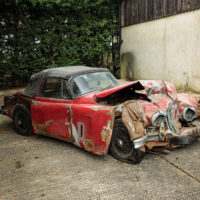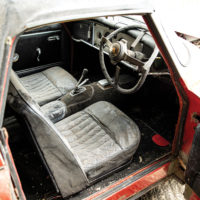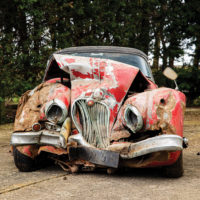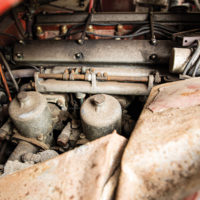SCM Analysis
Detailing
| Vehicle: | 1960 Jaguar XK 150 S 3.8 |
| Years Produced: | 1959–60 |
| Number Produced: | 89 |
| SCM Valuation: | $114,000 |
| Tune Up Cost: | $300 |
| Chassis Number Location: | Plate on scuttle |
| Engine Number Location: | Rear face of cam-chain tower on cylinder head |
| Club Info: | International Jaguar XK Club |
| Website: | http://www.xkclub.com |
| Alternatives: | 1951–54 Nash-Healey, 1958–60 Chevrolet Corvette, 1958–63 Alvis TD21 drophead |
This car, Lot 122, sold for $127,742 (£90,000) at Bonhams’ MPH May Auction at Bicester Heritage, U.K., on May 22, 2021.
Well. Did you evah! I’ve seen some horrors — including a Land Rover whose catalog entry suggested bringing a trailer because removing it from the field it was stuck in would likely pull it in half, and an MGB that was just a pile of bits and a transmission tunnel — but this was a proper whack-up job, comprehensively folded up when it hit that tree. The driver was lucky to walk away — the steering wheel was bent in half — but possibly not quite as lucky as he was on auction day.
The more you look, the worse it is. Forget the body, which you’d want to as soon as possible. The chassis looks bent, and by now it’s probably rotten too. It wasn’t even a roller, having to be wheeled into Bicester’s hangar on skates. Realistically, about two-thirds of the major componentry is probably saveable, plus dash and instruments, seats, hood frame, taillights and a couple of boxes of widgets. It’s not even certain that the engine is intact, as if the front pulley was hit hard enough the crankshaft could be bent, and some of the castings and ancillaries may be cracked or crushed.
Turn back the clock
The catalog gave the crash date as September 1996, but a picture dated the same month shows the car already rusty where it was damaged. It had obviously been badly restored before, as the crash revealed lots of filler under the paint, much of which flaked off, plus some amateurish weld repairs to the sheet metal under that. This was a restoration project long before the crash, and the impact did any subsequent owners a favor in revealing that.
Bonhams MPH runs a system whereby the vendors score their own car conditions upon consignment, and here the numbers were a depressing — though probably generous — 30/100. It had been estimated to sell for as little as £15,000 (around $21k) and anyone who’d seen it would have considered that a fair deal.
Jaguar-speak
Out of a total of almost 10,000 XK 150s made, the open 3.8 S, built in tiny numbers, sits at the top of the tree as the most desirable and expensive. But let’s just make the distinction between a roadster (“open two-seater” in Jaguar-speak) and the drophead coupe.
The roadster/OTS version is the better-looking, having longer front wings and hood, windscreen and cowl four inches further back, and a roadster-style top. Just 36 were made. Our car is a drophead, with slightly heavier looks and a more-substantial lined folding top. A total of 89 were made, 24 of them in right-hand drive like this one.
It just so happens that our latest three comparisons for price (see comps) are roadsters/OTS, but that’s as close as we can get and there’s little to choose between the two ragtops. Open two-seaters in RHD have chassis numbers starting with 82, left-hand-drive cars are 83, and drophead coupes start with 827 and 837 for RHD and LHD, respectively.
What to do?
Perfect restored roadsters/OTS were up to $300k five years ago, and the drophead will always lag slightly behind in dollars. That will have spurred the bidding here, as more than one person really wanted this car for its desirable spec and rarity.
But the numbers to restore it within its notional value don’t stack up, as I can’t see that the buyer was getting anything here other than the identity and a few major parts. If you were going to make a D-type/XKSS reproduction (probably too late for that, thanks to Jaguar’s recent legal action), there are cheaper donors out there, such as rotten S-type sedans.
On the upside — yes, there is an upside — the registration number NRN 6 went with it (English numbers stay with their cars for life, but are transferable for a fee), and is worth in the order of £10k ($14k). This evens up the balance a bit, but for the same money paid for this wreck, you could buy a decent XK coupe or roadster and drive it home the same day.
Stiff upper lip
The easiest fix here would be to jack up the chassis plate and slide a new car under it. But thanks to a bout of stubborn Britishness that makes one feel proud, that’s not going to happen. Incredibly, someone plans to painstakingly unpick and bring back to life this edificial horror, a monumental undertaking that makes you warm to the buyer.
MPH director Rob Hubbard confirmed: “The Jaguar was bought by a listed buildings restorer, who intends to use the same ethos as that when restoring a building — to keep as much of the original material as possible. The works will all be carried out in England, and we are excited to see the outcome of restoration.”
Exceptionally well sold — and equally heroically bought. Watch this space in a couple of years. ♦
(Introductory description courtesy of Bonhams.)
